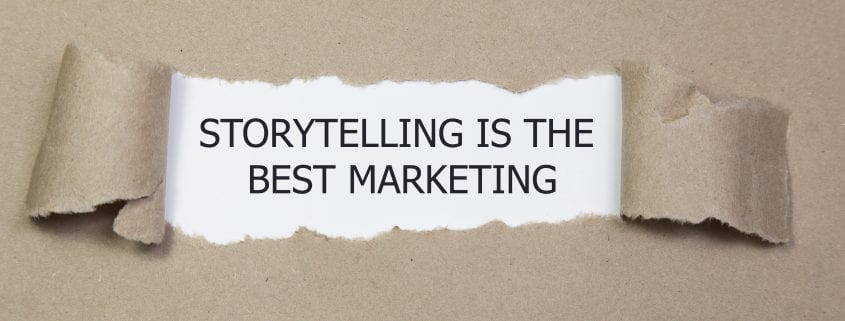
The Power of Storytelling in Real Estate Lead Generation
In the competitive world of real estate, standing out from the crowd is essential. While traditional marketing tactics like listing photos and open houses are still important, real estate lead generation is increasingly driven by the power of storytelling. By crafting compelling narratives around your listings, testimonials, and brand, you can engage potential clients on a deeper emotional level, build trust, and ultimately drive more conversions.
Why Storytelling Matters in Real Estate
Storytelling is not just about selling a property; it’s about selling a lifestyle, a dream, and an emotional connection. When potential buyers or sellers can envision themselves in the story you’re telling, they’re more likely to take action. According to a study by Virtuance, listings that incorporate storytelling elements see a 20% increase in engagement compared to those that rely solely on facts and figures.
But storytelling isn’t just about engagement—it’s also about differentiation. In a market saturated with listings, a well-told story can make your property or brand memorable. Think about it: when a buyer is scrolling through dozens of listings, the one that tells a story about a family enjoying their first holiday in a new home is far more likely to stick in their mind than a listing that simply states “3 bedrooms, 2 bathrooms.”
Read more about: 5 Brand Storytelling Examples To Learn From
Crafting Compelling Narratives for Listings
When it comes to real estate lead generation, your listings are your first opportunity to tell a story. Instead of simply listing the features of a property, focus on how those features can enhance the buyer’s life. Here are some tips for crafting compelling narratives:
Highlight the Lifestyle

Instead of saying “3-bedroom, 2-bathroom home,” try “A cozy family home with a spacious backyard perfect for weekend barbecues and a bright, sunlit kitchen where you can enjoy your morning coffee.” Paint a picture of the life the buyer could lead in this home.
Use Real Estate Testimonials
Share stories from previous clients who found their dream home through your services. Testimonials add credibility and help potential clients see themselves in a similar success story. For example, “The Smith family was able to find their forever home in just three weeks thanks to our personalized approach.”
Focus on Emotions
Buyers often make decisions based on emotions rather than logic. Use descriptive language to evoke feelings of comfort, excitement, or nostalgia. For example, “Imagine waking up to the sound of birds chirping in your private backyard oasis.”
Leveraging Digital Platforms and Social Media
In today’s digital age, real estate lead generation is heavily influenced by online presence. Platforms like Instagram, Facebook, and LinkedIn offer unique opportunities to tell your brand’s story and engage with potential clients.
Real Estate Social Media Stories
Use Instagram Stories or Facebook Live to give virtual tours of properties, share behind-the-scenes content, or highlight client success stories. These platforms allow you to connect with your audience in real-time and create a sense of urgency. For example, a Facebook Live tour of a new listing can generate immediate interest and inquiries.
Read more about: Mastering the Art of Integrated Digital and Social Media Marketing
Content Creation
Regularly publish blog posts, videos, and infographics that provide value to your audience. For example, a blog post titled “5 Tips for First-Time Homebuyers” not only positions you as an expert but also keeps your audience engaged with your brand. You can also create video content, such as “A Day in the Life of a Real Estate Agent,” to humanize your brand and build trust.
Engage with Your Audience
Don’t just post content—engage with your followers. Respond to comments, answer questions, and participate in conversations. This builds a sense of community and makes your audience feel valued.
Strategic Content Creation Tips
To maximize your real estate lead generation efforts, your content should be both informative and emotionally engaging. Here are some tips:
Use Visuals
Incorporate high-quality images and videos into your content. Visual storytelling is incredibly powerful and can help potential buyers visualize themselves in the property. For example, a video tour of a home with soft background music and a voiceover describing the lifestyle the home offers can be far more compelling than static images.
Incorporate Data
While storytelling is important, don’t forget to back up your narratives with data. For example, you could reference Resimpli’s blog on 80 Real Estate Lead Generation Statistics to add credibility to your content. Data can help reinforce the emotional appeal of your story with hard facts.
Call-to-Actions (CTAs)
Always include a clear CTA in your content. Whether it’s encouraging readers to schedule a consultation, download a guide, or follow you on social media, a strong CTA can help convert leads into clients. For example, at the end of a blog post, you could include a CTA like “Ready to find your dream home? Contact us today to schedule a consultation!”
The Role of Storytelling in Brands
Your brand is more than just your logo or tagline—it’s the story you tell about who you are and what you stand for. In real estate, your brand story can set you apart from the competition and attract the right clients.
Define Your Brand Story
What makes your real estate agency unique? Is it your personalized approach, your deep knowledge of the local market, or your commitment to client satisfaction? Define your brand story and weave it into all of your marketing materials.
Consistency is Key
Your brand story should be consistent across all platforms, from your website to your social media profiles to your email newsletters. Consistency helps reinforce your brand identity and makes it easier for potential clients to recognize and remember you.
Showcase Your Values
Use storytelling to showcase your values and what you stand for. For example, if community involvement is important to you, share stories about how you’ve contributed to local charities or organized neighborhood events.
Conclusion
In the world of real estate lead generation, storytelling is a powerful tool that can set you apart from the competition. By crafting compelling narratives, leveraging digital platforms, and building trust through strategic content creation, you can engage potential clients on a deeper level and drive more conversions. Remember, it’s not just about selling properties—it’s about selling dreams, lifestyles, and emotional connections.










